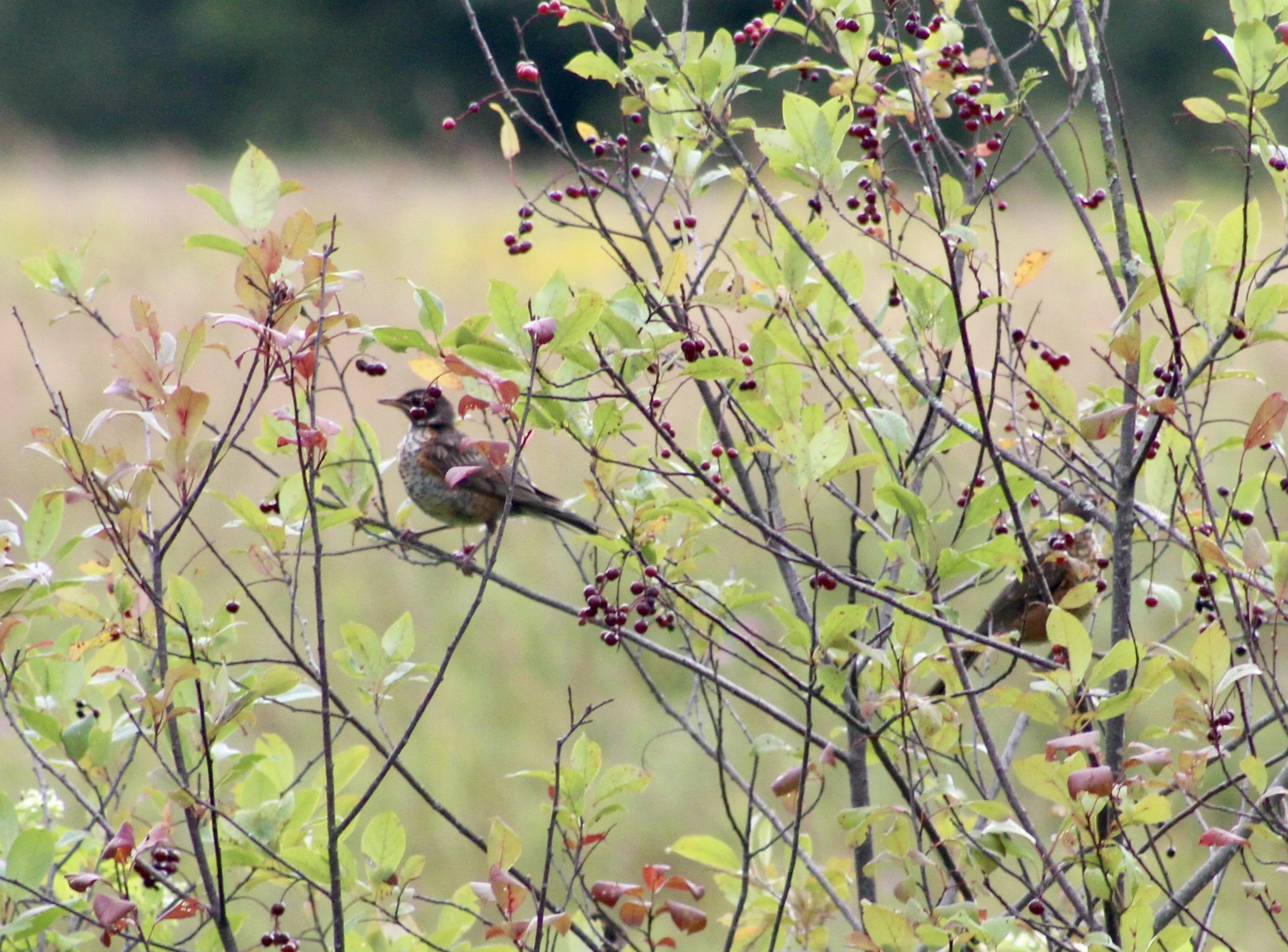Into the Woods with Curio: Berry Time
Doug Smith
“And he said to them, “Go into all the world and proclaim the gospel to the whole creation.”
Mark 16:15
Plants have some ingenious ways to distribute their seeds. Some, such as burdock seedheads, are designed to catch on the fur of a passing animal, (or a pant-leg). Others, such as milkweed pods, open up and release their seeds into the wind. One of the most important and effective seed dispersal methods that plants, especially trees and bushes, employ is with berries.
Blueberries, strawberries, bumbleberries, blackberries, pin and choke cherries, mountain ash berries and many other berries all contain seeds. And all of these are eaten, with fervour, by robins, bluebirds, waxwings, woodpeckers, grouse and other birds, as well as squirrels, mice, bears and many other animals. It’s a ploy the plants use to distribute their seeds away from the immediate area. The delicious, bright-coloured berries serve as a lure for the animals to literally swallow, becoming unwitting participants in the process.
Scientists refer to this process as endozoochory. It goes like this -- a robin eats a mountain ash berry, which then passes through its digestive tract and is eventually excreted, usually a good distance away from where the robin first ate the berry. Et voila – the plant has succeeded in getting its seed dispersed, and there are even some nutrients from the excrement to help the seed germinate. Many, many, many bush and tree species expand their ranges this way.
Berries are an essential part of many bird’s and animals diets in the late summer and into the fall. It’s more than just breakfast, lunch and dinner for them -- it’s the protein needed for the immature birds and other young of the year; the fuel that many birds need for their upcoming migratory trip; and the fat some animals need to make it through the upcoming winter, or hibernation. Bears especially need the satiation that blueberries, one of the earliest berry crops to ripen, provide. As each successive berry crop ripens the bears start to gain the weight they need for their upcoming winter’s hibernation.
Birds don’t build fat reserves the same as mammals, or they can’t fly the distances needed for their migration. But they benefit nutritionally from these additions to their diet as each berry crop ripens. The birds that don’t migrate, such as chickadees and bluejays, cache many types of seeds for the winter, (because berries are perishable they aren’t cached for later use). Some of these stored seeds are not found again, so end up germinating where they were left, which also serves to help the plants with their seed dispersal. Blue jays are noted as an important agent in the establishment of oak forests through their caching of acorns. Squirrels, mice and chipmunks also build caches of maple keys and other seeds to help them through the winter. The remnants or forgotten portions of these stored seeds contribute to still more seed dispersal.
It is all part of God’s amazing plan for His Creation, to be fruitful and multiply. And God wants me to be doing the same, that is, dispersing His good seed that I have ‘eaten’ and understand.
